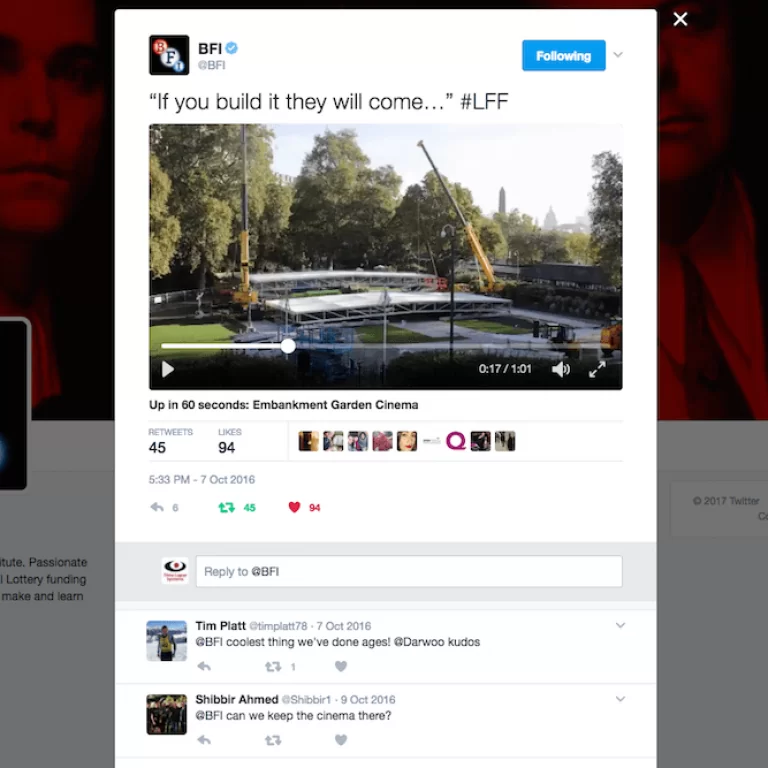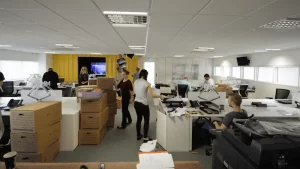
News Why use rapid capture time-lapse?
Time-lapse is often associated with rendering long-term work in a neat and manageable visual sequence. For projects taking place over a much shorter timeframe, however, rapid interval time-lapse offers a means of capturing faster-paced works over a matter of days, weeks, and months.
Rapid capture means that the camera system takes images at a faster pace than is usually expected for long-term works.
One image every 15 minutes over the course of an average working day from 8am to 5pm, would be an ideal set-up for construction works of one year or more. For faster-paced projects, though, such as a one-day event or an office fit-out over a few weeks for example, the camera will need to be equipped to capture much more frequently.
Indeed, the term ‘rapid capture’ takes its name from the greater number of images needed to produce a time-lapse video of a worthwhile length.
Capturing every detail
Internal works benefit greatly from rapid interval photography as any visual changes that occur within a particular enclosed space are significantly emphasised.
Expansion of Sky Bet’s head office in Leeds provides an excellent example of what can be achieved with this technique. Tracking 15-weeks worth of intense activity, the quicker frequency of capture means that every detail of progress was picked up for a concise but comprehensive minute-long narrative.
Spaces set up temporarily for special events and leisure activities also benefit greatly from rapid capture as construction and assembly of such spaces are often limited to hours and days.
This was the case when capturing the prestigious Horse Guards Parade St James’ Park and The Mall in London, where a temporary building was constructed on the Parade Ground. Rapid capture enabled extensive coverage of the lavish decoration of this interior.
The construction of the British Film Foundation’s temporary Embankment Garden Cinema also required both internal and external rapid capture.
A 60-second post-produced edit was perfect for sharing on social media platforms, where the visual sequence helped to spread the word of these short-term works as part of special 60th anniversary celebrations for the London Film Festival.
“If you build it they will come…” #LFF pic.twitter.com/eSgTROhGDw
— BFI (@BFI) October 7, 2016
Remote time-lapse monitoring allows for a greater degree of control over rate of capture in external environments, as camera settings can be adjusted as and when is appropriate. This is essential when at the mercy of temperamental weather conditions, like those in Scotland where we captured the erection of the first ever two-tier grandstand at St Andrews.
Stunning combinations
Of course, rapid capture can also be utilised in combination with video and time-lapse in the same sequence.
Different aspects of a project require different things from the camera and so it is not always appropriate to use the same rate of capture throughout.

Above: rapid interval time-lapse was effectively used to capture everyday activities at Southampton Freight Services.
A fit-out for retailer Vision Express at their flagship Oxford Street store, for example, involved video, time-lapse, and rapid capture in order to draw attention to important details as the shop transformed from a basic skeletal structure into a stylish commercial venue as part of a stunning visual narrative.
Honing in on specific details of internal works may also require more than a fixed camera method. For this behind-the-scenes look at the everyday workings of Southampton Freight Services, for instance, rapid capture was engaged on the ground as well in addition to a fixed position solution.
Even from this handful of examples, then, it is clear that time-lapse is an extremely versatile mode of photography.
And while time-lapse is typically employed to showcase long-term projects where progress unfolds at a steady pace, short-term works can be rendered just as effectively using rapid capture solutions.
Contact us to find out more about what we can offer.